Eating more protein can seem like a hurdle if you’re not used to eating the recommended amount that supports strength training and optimal fat loss. The recommended intake for the maximum amount of muscle and least amount of body fat is around 1 gram per pound of body weight.
So, if you weigh 150 pounds, that equates to 150 grams of protein.
The RDA (recommended dietary allowance) of protein is currently set at .8 grams per kilogram of body weight. To put that in imperial numbers, that’s about .36 grams of protein per pound.
So, if you weigh 150 pounds, that’s a recommended intake of about 54 grams of protein per day.
This is what you’d call a bare minimum. A Harvard Health article states:
Basically, it’s the minimum amount you need to keep from getting sick — not the specific amount you are supposed to eat every day.
And just like many of the other micro and macronutrient recommendations, the RDA mostly serves as a guideline for the minimum daily intake to keep you free from disease.
But when you’re exercising hard and putting in the time at the gym, you definitely need more protein, as well as more energy (from calories) in general, than the standard sedentary person.
So trying to consume 3 times the RDA of protein can be difficult if you’re not eating much protein currently. Today, I’m going to show you how.
Protein is found in meat, dairy products, eggs, fish, beans, and legumes. It’s also found in fruits and vegetables, but in much smaller amounts compared to animal products.
Here is a handful of ways to eat more protein:
1. Eat Lean Cuts Of Meat
Meat is one of the densest sources of protein. On average, there are about ~20 grams of protein for every 100 grams of raw meat. It will vary somewhat based on the cut, but most lean meats (anything under 5 grams of fat per serving) is going to contain 20+ grams of protein per 100-gram serving.
Your fattier cuts of meat will have similar amounts of protein, but more fat per serving. The fattier the cut, the more fat, and less protein it will have.
When you eat lean cuts of meat, you’re getting mostly protein with small amounts of fat. This is why people on a low-fat diet (anything lower than 50g fat per day) will tend to opt for lean cuts of chicken, beef, and pork over the fattier versions.
Here’s a sizeable, though not complete, list of lean protein sources:
- Chicken breast
- Turkey breast
- Canned tuna
- Boneless, trimmed pork
- Deli meat (turkey and ham)
- 96% lean ground beef
- Beef broth (gelatin)
- Bison and other wild game (antelope, deer, elk)
- Egg whites and Egg “beaters”
- Fat-free/low-fat cheese, dairy, cottage cheese, Greek yogurt, quark, kefir, Skyr
- Fresh fish (tuna, cod, tilapia, sea bass, snapper, etc)
- Shellfish (shrimp, crawfish, lobster)
- Squid, octopus
- Whey protein and casein protein powders
There are obviously more options, but this is a good list to get you started thinking about how you can choose leaner cuts over fattier cuts of meat.
The trick here is to examine your current diet. If you normally eat fatty cuts of beef, pork, chicken, or fish, you could easily substitute them for the lean versions.
2. Eat More Low-Fat Dairy Products
Dairy, in general, has some of the highest quality protein. But some dairy products contain a lot of fat. For example, a glass of whole milk has 8 grams of fat per 8-ounce serving. It also has 8 grams of protein and 11 grams of carbohydrate.
Low fat or skim milk can help you get more protein while keeping your total fat intake in check. An even better option than milk is 2% cottage cheese or nonfat Greek yogurt due to the total protein content per serving. Both of these options are packed with protein and little to no fat.
A daily staple for me is Daisy brand 2% cottage cheese. I like this brand because of the taste, but mostly because it contains no excipients like gums or carrageenan. Fage Greek yogurt is also a great choice because it’s high in protein, low in fat, and can serve as a sweet or savory option, depending on how you prepare it.
If I want my Greek yogurt to be sweet, I’ll mix it with some pineapple or strawberries in a bowl. For a savory dish, I tend to add it as a side to my meat and rice. It’s also a great sour cream substitute if you like to make homemade burritos or tacos.
Here’s a list of high protein dairy products:
- Cottage cheese
- Quark
- Skyr
- Milk
- Cheese (many varieties, look for low-fat versions)
- Yogurt (Greek version is high in protein)
- Whey and Casein protein powder
3. Use Protein Powders (in moderation)
Protein powders should never be a staple in the diet. They’re called supplements for a reason and that’s to supplement your current diet. Since I’m not a fan of the supplement industry, I don’t have many recommendations for quality protein powders.
I do have a few, though.
They are:
TrueNutrition. I’ve used this brand for a long time—way back when they were known as TrueProtein. I’ve never had a problem with this company, and I feel they’re very good in terms of quality and honesty about their product.
Legion Supplements. I’ve not used any of their protein powder, but I know Mike Matthews is very adamant about creating a quality product for his customers to use. He’s sent me tubs of his pre-workout and greens powder and I was very much impressed with the no-BS labeling, meaning there are not proprietary blends. Here’s his Whey+ protein powder.
Great Lakes Gelatin Collagen Hydrolysate. Gelatin powder is not really talked about much in the fitness and bodybuilding space because it’s been long accepted that collagen was an incomplete protein and subpar for repairing and rebuilding muscle tissue.
However, in light of the big picture, collagen protein, which comes from the connective tissue of animals, is high in glycine, which is an amino acid many are missing from their diet. This is because many people have moved away from eating nose-to-tail and are mostly consuming only muscle meats (which are very low in glycine). You can read more about the importance of glycine in my review of The First Diet. I also highly recommend getting The First Diet book, too.
Outside of these companies, I’m very careful to recommend supplements—especially protein. And it’s mostly because supplement companies do not care about your health. They only care about draining you of your hard-earned money by lying to you about their supposed benefits.
Supplements are mostly a giant scam and here’s proof:
- “New Whey Protein” is mostly collagen, underdosed by >80%, says lawsuit | Article by Anthony Roberts
- Muscle Milk, Syntha 6, Isoflex, Cellucor, and Optimum Nutrition’s Proteins Tested for BCAA Content: ALL FAIL | Article by Anthony Roberts
- Huge Reddit Thread Exposing Protein Companies And Their False Claims
So remember—if you feel compelled to buy a protein powder, or any supplement for that matter, most of the time, it’s your emotions going haywire based on the supposed promised results.
4. Plan Your Meals Ahead Of Time
If you plan out your meals, you have a far greater chance of getting enough protein throughout the day because you’ll have a good idea of what you need to eat and when. Meal planning can seem cumbersome, but it will make hitting your protein intake goals much easier because you’re leaving nothing to chance.
Here’s an example.
Let’s say you plan to eat 4 meals per day.
Breakfast, lunch, a pre-workout meal, and dinner.
If you’re trying to consume 150g of protein per day, you would divide that intake by 4.
150/4 = 37.5 grams.
So each meal would ideally contain 30-40 grams of protein in order to hit your daily target intake. Each meal doesn’t have to contain the exact same amount of protein, but this gives you a good idea of how much protein to aim for in each meal to consume enough by the end of the day.
This is how my day tends to look in terms of total meals and protein-rich food:
Breakfast:
- 2 lattes made with 2% milk, sugar, gelatin powder.
- Smoothie made with 2% cottage cheese, kefir, orange juice
Lunch:
- 2 eggs scrambled with ham chunks, jalapenos, tomatoes, and 2% cheese
- 1 Cup of Greek yogurt
- 1 cup of grape juice
- Half a honeydew melon
Pre-workout:
- 1 cup skim milk
- 1 cup of orange juice
Dinner:
- 200-300 grams of lean beef, chicken or pork cooked with peppers, onions and other veggies
- 100-150 grams (pre-cooked weight) of white rice
- 1 cup of bone broth
- ½ cup of Fage Greek yogurt on the side
5. Frontload Your Day With A Protein-rich Breakfast
If you struggle to get enough protein by the end of the day, one of the best ways to ensure you hit your goals is to eat a good amount of protein early in the day. This can also ensure you get enough calories in the case you’re very busy and struggle with eating enough quality food.
One way I frontload my protein for the day is by consuming a decent amount of protein from cottage cheese, yogurt, milk, and gelatin powder for my first meal. I can easily get 50-60 grams of protein in my breakfast shake and lattes, so this makes it easy for me to hit 180-200 grams of protein daily.
But what if you want to increase protein without a huge increase in carbs, fat, and total calories?
When you’re trying to eat a higher amount of protein but control calories, this is where you’ll have to get creative with your food choices and make some adjustments.
How To Eat More Protein And Less Fat
Make food choices that are naturally lower in fat. This means choosing white meat over dark meat when eating chicken, choosing leaner cuts of beef and pork, and lower fat fish.
It also means using a smaller amount of oil when cooking your meat in a pan or choosing to grill your meat as opposed to frying it.
Another way to get more protein is to substitute higher fat foods for the lower fat versions.
Almost all dairy products have lower fat and skimmed versions.
Deli meats can be a decent choice. Roast beef, sliced turkey, and ham tend to be low in fat.
If you’re on the go, beef jerky can be an easy, low-fat snack to travel with.
There are many seafood options low in fat, as well.
Bodybuilders are notorious for eating tuna out of a can because it’s so low in fat and high in protein. Tilapia, halibut, shrimp, lobster, octopus and squid are all low fat if you keep the cooking oil to a minimum.
So when you’re trying to eat more protein but limit calories from fat, look for the leaner protein sources.
How To Eat More Protein And Fewer Carbs
The previous idea of eating leaner cuts of meat applies here, but if you’re eating fewer carbs for whatever reason, then you can think about substituting carb-heavy foods with more protein-heavy foods.
An example would be if you normally eat a carb-heavy breakfast full of toast, cereal, or oatmeal, you could choose a breakfast higher in protein.
So instead of cereal and toast, you could have fruit and Greek yogurt with some eggs. This would cut down on the carbohydrate totals and increase your protein intake very easily.
You could use protein powders to help increase your intake with no major impact on total carbohydrate intake.
You could also eat more cooked veggies to replace potatoes or another carb source for one meal of the day.
How To Eat More Protein As A Vegetarian
If you’re a practicing vegetarian, this means you do not eat the flesh of animals, but you consume animal products such as dairy and eggs. And since dairy is allowed, this opens up a huge line of options to increase your protein intake as a vegetarian.
Eggs and egg whites are a major option with lots of variety in terms of how you can prepare them for a meal.
With dairy, you have endless options with all the dairy products I mentioned above. And remember—most all dairy comes in a low-fat version.
How To Eat More Protein As A Vegan
As a vegan, your options become smaller because there are no animal products allowed, whatsoever. One thing to understand is that while vegetables contain protein, they don’t contain much. And it should be mentioned that raw vegetables are often hard to digest, thus making it harder to get all the protein and other nutrients from them.
And if you’re aiming to get the recommended protein intake for muscle gain, then you will have to find a solution for getting sufficient amounts.
Some options for increasing your protein intake as a vegan are as follows:
- Beans
- Lentils
- Tofu / Soy
- Soy milk
- Hemp protein powder
- Gemma (pea) protein powder
- Rice protein powder
Important Note: It’s often recommended that nuts are a high-protein source for vegans, but I’m going to caution against that because if you look at the general profile of peanut butter (often stated as being a high-protein food), a 2 tablespoon serving gives you the following macros:
- 16 grams of fat
- 8 grams of protein
- 6 grams of carbohydrate
At first glance, you’ll notice that just 2 tablespoons has a whopping 8 grams of protein, which is the same as an 8-ounce glass of milk. But the fat is over 70% of the total calories per serving. So if you wanted to load up on peanut butter to reach your protein goals, you’ll most likely be going over your fat macronutrient goals by end of the day.
What are your strategies for getting more protein?
Do you have any recommendations or suggestions for eating more protein throughout the day? If so, leave them in the comments below.

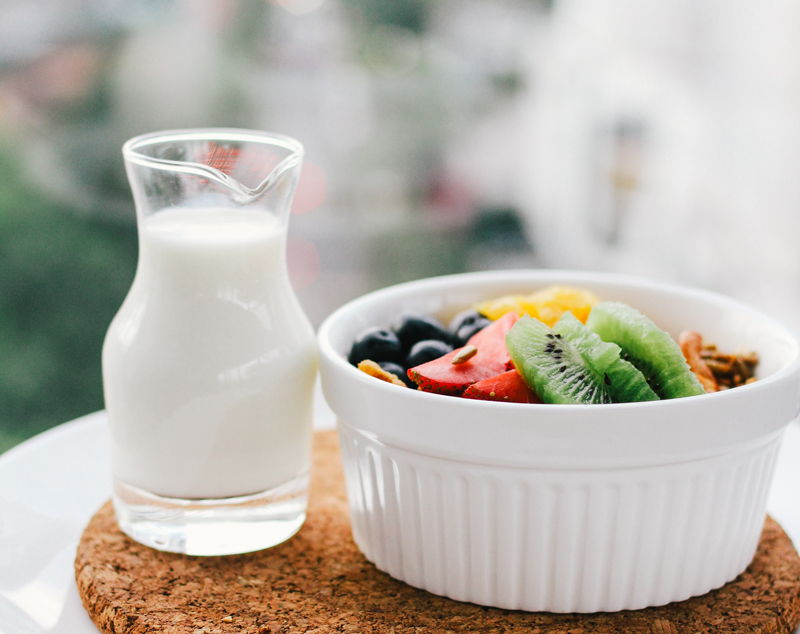
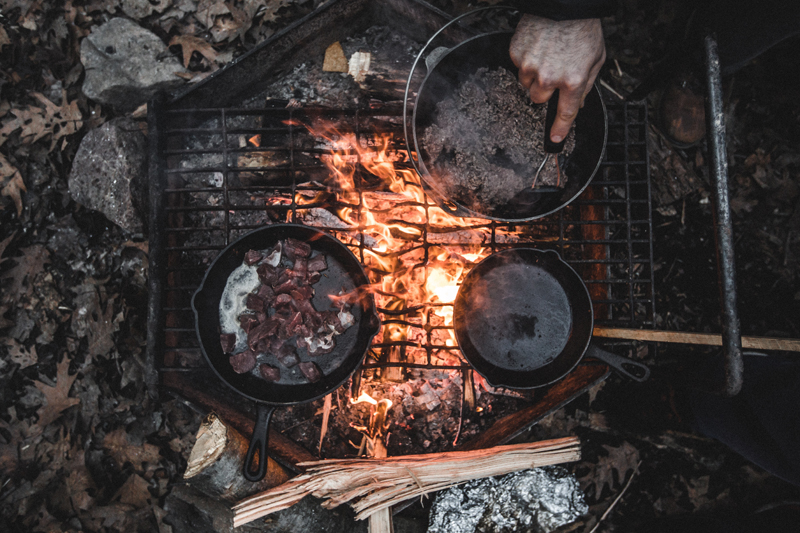
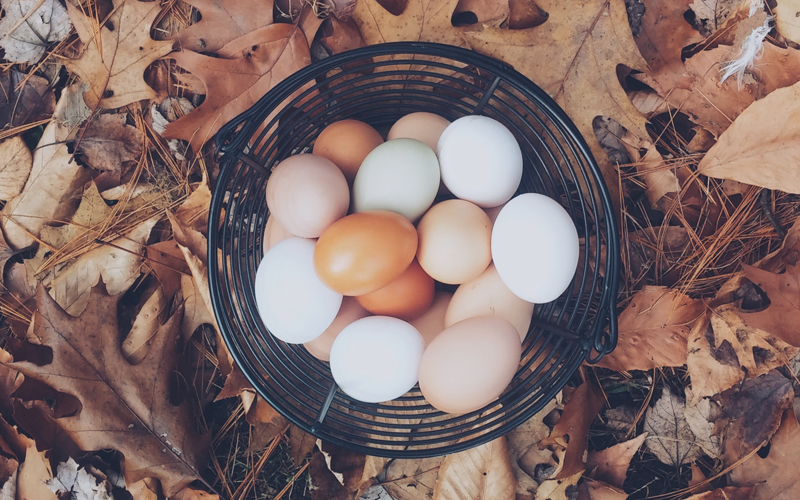
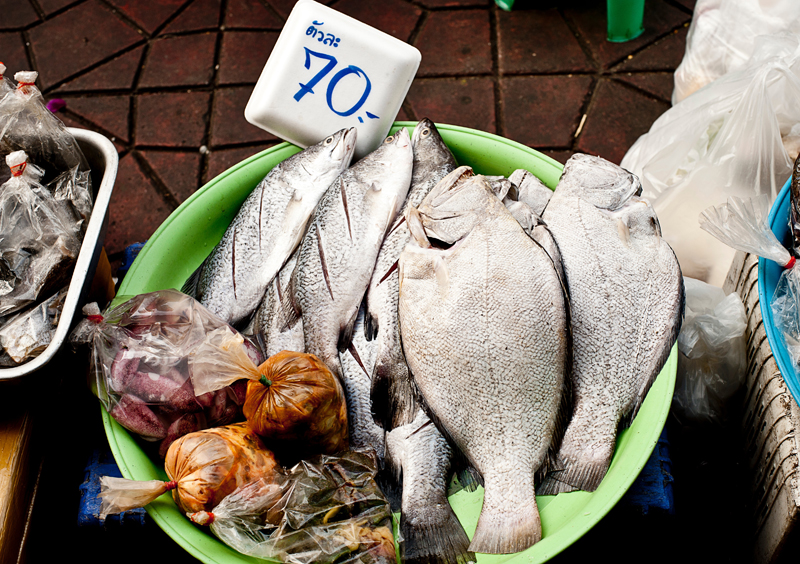
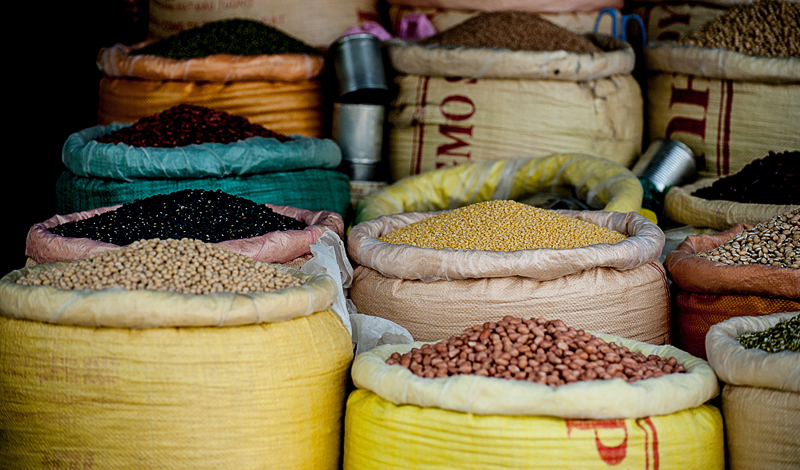

Hey JC, how would you change your diet around if you were going to train right after breakfast instead of later in the day?
I would have a very small breakfast and a post-workout meal, then have lunch and dinner as normal.
Do you go with mostly lower fat yogurt/cheeses/cottage cheese?
I’m sure this doesn’t apply to most, but for me, and probably a lot of people who have been into fitness and high-protein diets for awhile, protein isn’t a struggle. In fact, I have a hard time keeping my protein in the 150g range. It is so easy to eat more than I need. I don’t think any more protein than this is necessary for optimal protein muscle synthesis. I weigh a little under or over 170 depending on the day.
Why do you recommend 1g per lb? Personally I’ve been seeing better results keeping protein intake a little lower at .8g per lb, so I have room for more carbs and fat for hormonal health.
I think 1g is just easy to go by. the .8g is fine, too.
I do mostly go with low fat dairy choices.
I’ve been experimenting with your latte (also have the Great Lakes brand), but never seem to get the amount of gelatin right – and the result is usually a gooey mess in the bottom of my cup. Care to share your “recipe” or any general tips?
Hey, are you doing it with the collagen hydrolysate or the regular gelatin powder? If it’s with regular powder, I can see why it clumps up.
What about using peanut butter powder to get rid of the fat and amp up the protein. PBFIT is great and you can use it with a little cocoa powder and almond milk instead of water to make it taste terrific!
that’s actually a better idea than eating plain peanut butter. I hadn’t thought of PBFIT but I see it’s about 40% protein when you look at the total calories. 5g protein per 50 calories. Great!
Lots of good advice here, JC! I drink, “on the daily” 2-3 Whey Protein Shakes a day to hit my daily protein marcos. However, the bloating, gas and all around not feeling very fulfilled. Plus, it is expensive too. In fact, I use “Muscle Milk’s ‘Cyto Sport’ Whey Protein. one of the Whey Protein’s that is mentioned in the article you provided a link for. So, my question is, can I avoid/not use Whey Protein and still build muscle? In fact, do I need it at all? I’m happy to ‘kick it to the curb’ as I much prefer to get my protein from lean sources as you cited above. Looking forward to hearing from you soon. Thank you! LIFT ON! LIVE ON!
You can totally avoid whey protein as long as you get the protein from other sources.
YES!! GOOD BYE PROTEIN FARTS!!! LOL! Thanks so much JC for saving my marriage!! LOL!
LOL!!